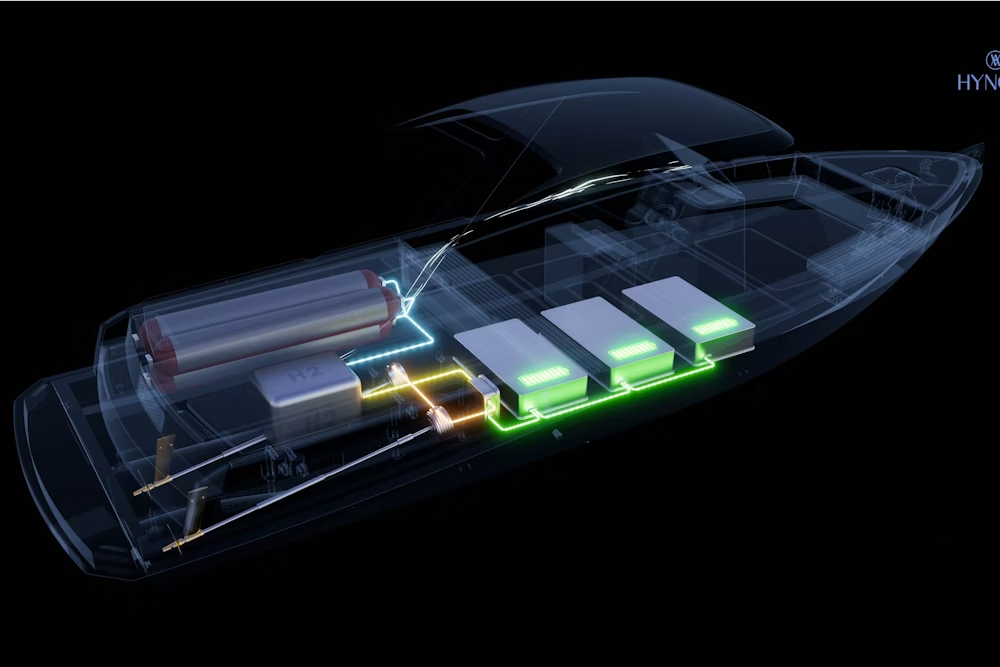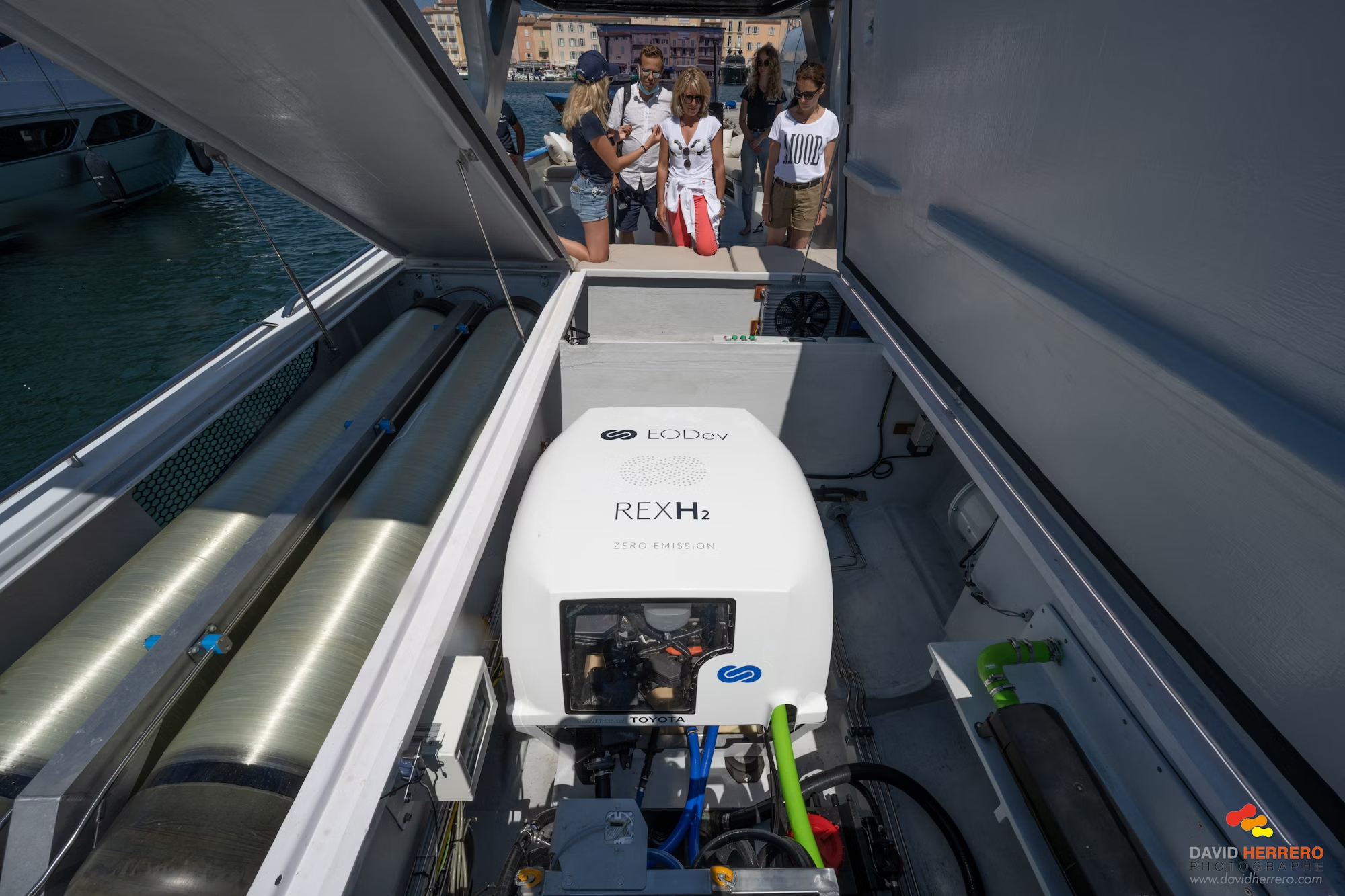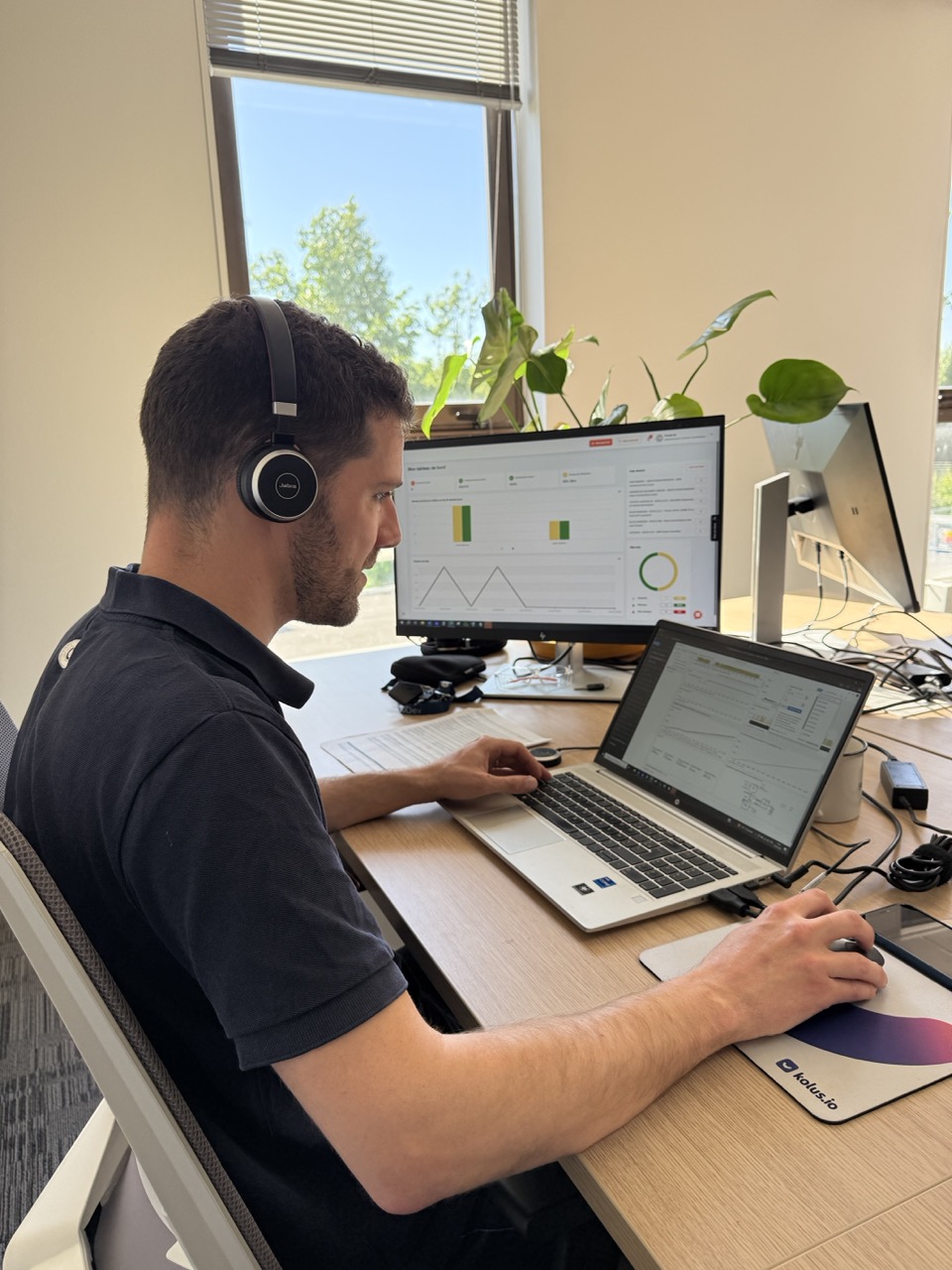Electro-hydrogen hybridization: an ideal combination
Electro-hydrogen hybridization is at the heart of the propulsion system of The New Era from Hynova Yachts, the first “dayboat” equipped with a hydrogen-powered REXH₂®. The operation of such a system has paved the way for carbon-free maritime mobility with greater autonomy.

How does electro-hydrogen propulsion work?
The boat’s electric motors are powered by a hybrid energy source: a PEMFC (Proton Exchange Membrane Fuel Cell), such as EODev’s REXH₂®, and batteries (LiFePO4).
The fuel cell provides the average power needed to propel the vessel, and the batteries will handle power peaks. The overall efficiency is improved because the fuel cell thus operates at its optimum operating point, with 60% efficiency. If we compare to a diesel engine, the overall efficiency of the latter is around 30%, with double heat loss. In addition, Diesel engines must be dimensioned for maximum peak power. The hybrid hydrogen solution makes it possible, like a PHEV vehicle (Plug’in Hybrid Electric Vehicle), to carry out short 100% electric service with the battery, and long services with the energy supply of hydrogen.
The hydrogen is stored in carbon fiber tanks, under a pressure of 350 or 700 bars. The advantages compared to the other options are the same as those found on board Energy Observer: zero emissions (neither CO₂ nor fine particles), silence, and greater power and range than with a 100% battery solution.

How is a battery-fuel cell hybridization configured?
The fuel cell and the batteries are connected in parallel to the voltage network supplying the motors. The fuel cell can only supply power, while the battery can supply electricity to the motors or receive it from the fuel cell. The role of the batteries is to respond to the calls for power from the motors, to overcome the relatively low response time of the fuel cell and provide it with the additional power to reach the maximum speed of the boat. The battery is sized to move the boat forward at its cruising speed, and therefore the average power required for the operation of the vessel. High speed peaks, of relatively short duration, are provided by the two sources together. Sizing the fuel cell to maximum power would reduce the compactness of the propulsion chain. A hybridization management algorithm is therefore developed to optimize the operation of the entire system.
The number and power of the batteries are dimensioned according to the maximum intermittent power or according to the desired battery autonomy. Of course the weight, the size and the price of batteries constitute a limit which can lead to reconsidering the needs in power and energy. But all configurations are possible and adapted for each use.
What is the difference with diesel-electric hybridization or the use of a thermal engine?
In a diesel-electric boat, diesel is the source of energy, the engine transforms the chemical energy of diesel into mechanical energy. In the case of hydrogen hybridization, hydrogen is the source of energy, the fuel cell transforms the chemical energy of hydrogen into electrical energy, the electric motor transforms electrical energy into mechanical energy. We can say that diesel is replaced by hydrogen and a fuel cell, and the internal combustion engine replaced by an electric motor. It should be noted that hydrogen is not a source of energy like diesel, but an energy carrier. From the user’s point of view, hydrogen replaces diesel, but from a macro-economic standpoint it is the “electrical network + hydrogen” combination that replaces diesel.
